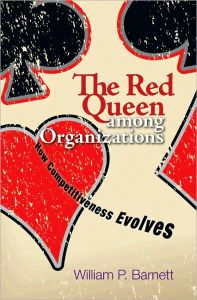
The Red Queen among Organizations
How Competitiveness Evolves
Recommendation
This book tackles an important, fascinating subject, “how competitiveness evolves.” Adapting techniques from disciplines as disparate as evolutionary biology and literature (the guiding metaphor of the Red Queen is from Lewis Carroll’s Through the Looking Glass, hinting that the text is not totally devoid of humor), William P. Barnett brings an intelligence to bear that is sharply focused and dense with knowledge. He makes essential observations about organizational learning, offering telling, innovative insights on the real complexity of information management and communication. getAbstract recommends this to serious students of knowledge and management. Regretfully, only serious students are likely to sift through the analysis, since Barnett’s style is as dense as his learning, making for tough going at times – though the Red Queen perspective is worth the trip.
Summary
About the Author
William P. Barnett is the Thomas M. Siebel Professor of Business Leadership, Strategy and Organizations at Stanford’s Graduate School of Business.








Comment on this summary